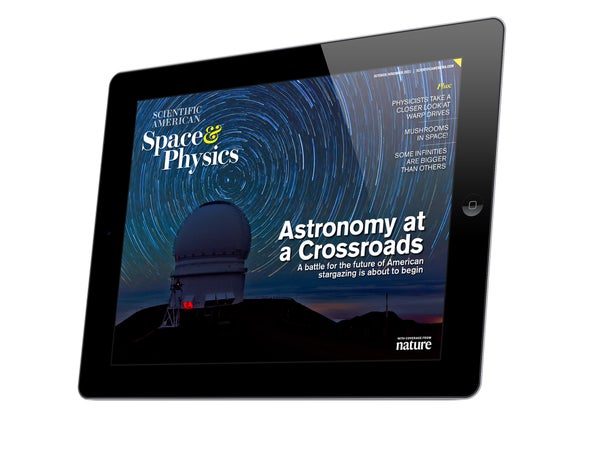When news journalists write headlines, they brainstorm the most succinct, compelling encapsulation—the takehome message—for their articles. This is much trickier than it sounds, as certain phrasings might misrepresent a story’s essence or omit important elements. In this collection, senior space editor Lee Billings does an in-depth analysis of what might be included in the decadal astronomy report, set to be released any moment by the U.S. National Academies of Science, Engineering, and Medicine. It will help set the national priorities for astronomical research and budgeting for the next decade and beyond, as our article’s title indicates (see “This Report Could Make or Break the Next 30 Years of U.S. Astronomy”).
As I read Billings’s article, I couldn’t help but be reminded of headline writing. As John O’Meara, chief scientist of the W. M. Keck Observatory on Mauna Kea in Hawaii, astutely tells Billings, to get public buy-in for space funding, the decadal report would do well to come up with a single mission objective for people to rally around— “What causes life in the universe?” for example. No small feat considering the many stakeholders and interests at the table, not to mention the myriad questions astronomers are hoping to answer in the coming years. As we say in journalism, a strong headline can be what determines if anyone reads your article at all. Apparently the near future of cosmology may hinge on a winning banner statement, too. We’ll soon see how well the decadal report authors do.


